 ~by Amanda Smith I have always intuitively been aware of writing seasons throughout a year. Some months are naturally filled with demanding family or work commitments, while others provide more writing time. Throughout the years, I have tried to wrangle the seasons, to ignore natural rhythms, in order to be consistently productive each month. Seasons do not easily conform to human whim. Anyone who has spent a year in New England knows one can cry, and cajole, and yell at March to be springy until the cows come home, but lovely weather does not arrive until mid-April. Similarly, writers can plan and plot and highlight and set timers, but life’s seasons continue to roll one into the other undeterred by our best organization. So what is a writer to do? Jerry Spinelli famously advised to “write in the cracks,” which I used to embrace with weed-like ferocity. I tried to force my writing into every possible crack, exhausting myself and probably frustrating my family. There were times when I literally ran back to my desk after tossing another load of laundry into the washer, not to waste “a crack” - yelling at March to be warm. I can’t say that was super productive. This year, I took on a new job that offered zero cracks. If allowed, this job would bleed into every tiny line like red lipstick on the wrinkly lips of my days and weeks and months. Don’t get me wrong, I love my job. But it’s a lot. Even in this tenacious job, the ever-present heartbeat of my writing seasons was present. So I listened. I paid attention. And when, at a 24 Carrot Writing meeting, Megan mentioned that summer traditionally is a slower writing time for her, I sat up. She also experiences writing seasons? Curiosity overcame me. What really, are my seasons? I pulled out my trusty bullet journals of the last four years and ran some stats. And here is what I learned, regardless of my career change. For me, January, February, and November are my most productive writing months (hello winter)! The summer months have their own rhythm, but are a close second, while, surprisingly April, and December are not too far behind. However, like clockwork, writing grinds to an alarming halt every March (maybe it’s all that yelling at the cold!) and May. “How is this information useful?” you ask. Knowing my natural writing seasons helps me embrace them rather than fight them, and that brings contentment to my writing schedule. When setting yearly goals, understanding writing seasons helps me plan big tasks for the predictably productive months. It allows me to be kind to myself during the months that are clearly already stacked with other responsibilities. Rolling with the seasons also helps prevent burn-out. If you are a long-time 24 Carrot Writer, you probably have records of your achieved writing goals somewhere. I would like to invite you to browse your journals, and see if you can identify your writing seasons. Because just like nature needs to take a break from all its blooming and growing and producing and buzzing, sometimes life demands that the writer takes a rest. Through rest comes restoration. And even though progress is not visible in those off seasons, just like tree roots go deep and sap flows beneath the surface, your stories are being nourished, gaining strength, becoming ready to bloom when you reach your proverbial mid-April!
2 Comments
by Amanda Smith The first time I heard these words by St. Francis of Assisi, they lit me on fire. I couldn’t shake them from my head. I planned my year’s writing goals around them, and I even wrote a blog in January of 2018 to spark some fire in you, dear reader. You may read it here, but the SparkNotes version is: Let’s do this! Let’s start with the necessary, then set goals for the possible, and in true Robert Browning fashion, let our “reach exceed our grasp” as we strive for those impossible dream-goals. Rah-rah!
During December 2023, as I did my yearly goal review and planning, I pondered the peg on which to hang my 2024 writing goal hat. St. Francis’ words fizzled somewhere deep in the synapses of my long-term memory. I pushed down that thought. “Now listen here, St. Francis,” I told the holy friar from Assisi, “life looks different than it did in thirteenth century Italy. It even looks different than it did in 2018.” Back then I had two boys in elementary and middle school. My stay-at-home mornings were mostly my own. Back then I could easily accomplish the necessary, reach past the possible, and plan for the impossible. But this is 2024. After eighteen years at home, I’ve been given the opportunity to return to the classroom and finally teach what I’ve always wanted to: High School Literature and Composition. Even though it is fulfilling and exciting, it certainly leaves little head-space for doing beyond what is urgent. I also have a husband who works from home, a college kid on a completely different schedule than the rest of us, and a high schooler that wants to do EVERYTHING. Post-pandemic 2024-me is telling 2018-me, “Girl, take a chill pill.” But the old saint is relentless: “Start by doing what is necessary…” he whispers. As I stare at the fresh new-year page of my beloved bullet journal, I calm my inner-skeptic and make space for his words. And would you know it? St. Francis’ wisdom hits differently than it did way back then: The wonder of doing the necessary, is that the unnecessary gets stripped away. We’ve all established goals and routines throughout the years of building our careers, but somehow, mine had become a heavy list of expectations that weighed me down and plucked the wings of my dreams. Do I need to track all my reading in two places? Do I need to persist in a monthly querying practice that gobbles up precious writing time, proves ineffective, and sucks the joy out of creating or is there a more sensible way? Do I really need to plot my writing life months ahead, or is it okay to just draw pencil hearts in my journal on the days that might likely offer an hour or two of writing? In the beginning of this new year, it is worth asking yourself whether your writing routines and goals still serve you and to strip away the excess until only the necessary remains. Now, if you are in the place where I was six years ago, where you can Robert Browning it, go for it. Please do. “Or what is a heaven for?” But even then, add some St. Francis frugality to your writing goals. What is truly necessary? To write. Let’s start there. The prophet Zechariah said, “Do not despise the day of small beginnings.” Small beginnings. One foot in front of the other. Write. And then do the next thing. “Start,” St. Francis said. That’s it. Just start. 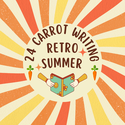 Puffy stickers on a Trapper Keeper, a smile glistening with strawberry Kissing Potion, and a pencil box filled with scratch-and-sniff markers, and you were off to a great start for the school year. But how do you restart your writing after a summer of listening to the Pretty in Pink soundtrack on your Walkman? This Back-to-School Retro Summer post has the perfect checklist. ~ by Amanda Smith September. The luggage is unpacked. The house is put back together. The kids are settled in their back-to-school routines. Which lends me to ask, in the words of our good friend Joey, As much as we itch to get back to writing, finding our groove after the summer can be challenging. Here are a few strategies that help me focus my writing for the last quarter of the year.
Do you belong to a critique group or book discussion group? Often these groups take a hiatus over Summer. Don’t forget to press reset and get back to your normal routines. When I was a kid I used to hate the “back to school” commercials that appeared on TV mid-vacation. We used to say “back to jail” or “back into the cage.” Now I view this time of year differently. I love the excitement of new teachers and learning. I appreciate routines clicking into place, like the gears of a well-oiled machine. And I enjoy the quiet house and increased productivity that it brings. This fall, may you find your desk, reset your schedule, go back to school, and set aggressive goals to finish the year strong!  During the dog-days of summer we are time-traveling back to elementary art class. Grab your Crayola Caddy, draw Harry, and while you are adding Pound Puppy features, consider your story's structure and details, just like my first graders taught me back in 2018. 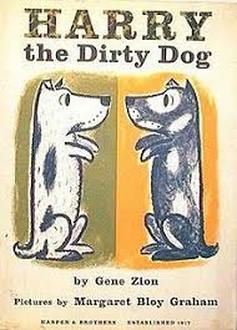 ~ by Amanda Smith As a substitute teacher I often walk into an emergency, with lesson plans drawn up quickly by someone whose mind was in a much more urgent place. On one such a day, the art teacher left me, in her words, “sketchy plans” – most of which involved students finishing current projects followed by open studio. Now, I’m all for open studio and free draw, but first grade had no projects to finish first. That meant 45 minutes of free draw: The definition of chaos. Thankfully, I had a planning period. And an ally in the school librarian. After thinking for a second or two, she pulled Harry the Dirty Dog by Gene Zion off her shelf. “You know,” she said, “kids love dogs. And they always enjoy Harry’s adventures.” Together we studied Margaret Bloy Graham’s illustrations, and a lesson plan was born. Fast forward to the first-grade class. I read the book. The kids were delighted. Then I held up Harry the Dirty Dog. “We are going to draw Harry,” I said. Shock and mayhem. “What!” “We can’t draw like that!” “That’s impossible.” I turned a deaf ear to the protests as I handed out a sheet of paper with a rectangle already drawn on it. I explained that we would have to work together to draw Harry, as it is a step by step process. Then the students and I drew Harry using the parameters of a rectangle. As their dog drawings took shape, their joy was contagious. And here’s the thing: even though they all followed my instructions, not one of the dogs looked the same. We had skinny, long nosed dachshunds, and pudgy, round nosed puppies. We had droopy eared dogs and shaggy tailed dogs. Boy Harrys with spiky collars and girl Harrys with pink bows. Every student loved their own Harry, and was amazed that they could indeed draw like that.
Here’s what I learned by drawing Harry, and how it pertains to writing:
 This week's throwback blog was first posted in 2021 as part of our Road to Publication series and is chockablock with information about preparing your work for publication. Welcome to RETRO SUMMER!  ~by Amanda Smith So, you wrote something. And now you wonder what the steps are for getting it published. First of all, congratulations! Writing on a consistent basis, to the point where you have a book, is a huge accomplishment. (If you want to write children's books and aren't sure where to start, this blog by Kelly is for you.) Writing a book, however, is only the first step. Sending a freshly written manuscript to an agent or publisher would be like asking Paul and Prue to judge a cake after you had only gathered the ingredients. Here are some basic steps towards publishing: Critique Partners: You need someone else's eyes on your work (not family!). Ideally your critique partners should be up to date on the current market and knowledgeable about writing. They will look at content, structure, plot and character development, language use and, if you need, line editing. It is imperative to have someone else read your work. Sometimes we get so caught up in the excitement of a new project, or have read the same words so many times we don't see the plot holes, unclear details, or glaring mistakes. Where to find critique partners? SCBWI Local writing organizations Online groups such as Kidlit 411, Storystorm, Children’s Book Authors & Illustrators, 12X12, to name a few. Craft workshops and courses Revisions: If your critique partners are worth their salt, you will receive lots of revision notes. Depending on the depth of the notes, you will have to revise or, in some cases, even rewrite. Regardless of the scope of revisions, you will likely have a couple of critique-revision rounds. Do not skip this step! It is during this phase that your work continues to mature and become the best it can be. It is hugely rewarding to dig deep and polish away the rough edges of your story. Beta Readers: (Not necessary for picture books) After critiques and revisions, you need Beta readers, who consist of readers the age of your intended audience or readers deeply familiar with your genre (think teachers, librarians). A beta reader questionnaire is a helpful tool for gathering focused feedback. Another round of revisions will likely follow beta readers. Publishing choices: Once you have completed these steps and you feel that your work is ready to send out, you need to decide whether you want to take the traditional publishing route or explore independent publishing? The rest of today's post will focus on traditional publishing. Next time we will learn about independent (self) publishing. Make sure you know the pros and cons of each option. If you choose traditional publishing, you should know that it can take months or even years. Most of the bigger publishers are closed to unsolicited submissions and you need an agent to represent your work. Some publishing houses however, do accept unagented submissions. Books, such as THE CHILDREN’S WRITER’S & ILLUSTRATOR’S MARKET, can provide guidance as to which publishing houses are open to unagented submissions. Always check the publisher’s website for their latest guidelines. While you can certainly do research online and through publishing trade journals to find publishers who are open to unagented or unsolicited manuscripts, it is very helpful if you have a more personal contact with an editor at the publishing house. One of the best ways to make this connection is to attend a class or workshop taught by the editor. Also, editors who attend writing conferences will often accept unsolicited submissions from conference attendees for a limited time, so be sure to look into this possibility when attending these events. Always do your research to be sure a specific publisher publishes the genre/age level you write. Agents: A good literary agent will help you polish and edit your story, send submissions to publishing houses, negotiate contracts, and handle advances and royalties. They are super knowledgeable about the industry, and know what editors are seeking. Your agent is your ally and business partner. Therefore it is important to carefully research agents, not only for what genres they represent or what their interests are, but also whether they will be a good match for you. Once you have narrowed down agents you would like to approach, you need to query. Places to research agents: SCBWI The Book Agency websites Manuscript wishlist (www.manuscriptwishlist.com/) #MSWL (https://www.manuscriptwishlist.com/) QueryTracker (querytracker.net/) Publishers Marketplace (https://www.publishersmarketplace.com/) Some writing websites also offer a treasure trove of information in the form of agent interviews and guest blogs. A few to browse are http://www.literaryrambles.com/, https://www.pbspotlight.com/, and The 12x12challenge Most agents are active on social media Acknowledgements of books you have read Queries: A query is a letter in which writers pitch their work and introduce themselves to an agent. It is a business letter that follows a specific form. Stay tuned for a guest blog regarding query letters by the Query Godmother, Kris Asselin, later this month. Queries are used for picture books, both fiction and nonfiction, as well as all other fiction. Nonfiction writers send a cover letter, proposal with outline, and some writing samples. Each agent or agency has their own rules regarding submissions. It is very important that you read and follow each specific agency's submission guidelines. Not only does it streamline the process for them, but it also reflects well on you, their future client, and your ability to take direction. Be prepared for several rounds of querying. If an agent would like to represent you, they will contact you and usually schedule a phone call with you to further discuss the details. Remember, not only is the agent interviewing you to see whether they want to take you on as a client, but you are also interviewing the agent to see whether they will be a good match for you. Once you have received an offer of representation and contracts have been signed, you and your agent may go through another round of revisions before they submit your manuscript to publishers. There might be several rounds of submissions before you receive an offer for your book. At this point the process is out of your hands. You have baked your cake to perfection. You've trimmed and filled and frosted. You've decorated and delicately flavored. Editors, acquisition boards, and marketing departments are your proverbial judges, and once your delectable offering hits the right palate, you will get your Hollywood-handshake: A published book!  Boogie on down to the other two posts in this series, about Independent Publishing and Writing a Query Letter. Catch you on the flip side!  Art by Janine Nel. Art by Janine Nel. ~by Amanda Smith A couple of months ago, I was prattling my mental to-do list aloud while my husband patiently listened. “… and I still have to write down my monthly goals before our 24 Carrot meeting tomorrow,” I said, running out of breath, and steam. And time. His eyes glinted mischievously. “Just copy last October’s goals,” he said. Wrapped up in my busyness, I retorted, “If I could just copy last year’s goals, that means our method doesn’t work very well, does it?” But wait? Does it? His silly suggestion intrigued me. 24 Carrot Writing celebrated its eighth birthday this year. For eight years (more actually, because we were an accountability group before we were a blog) I’ve religiously set monthly goals, checked them off, and reported back to my partners. Our whole premise is rooted in the idea of setting monthly goals and rewarding ourselves for reaching those goals. But the elephant in the room asks: Does it actually work? I always check my yearly goals around this time of the year to see where I hit the mark, where I missed, and where, perhaps the road turned in a different direction. We also encourage our readers to check those goals mid-year with our June Years Eve blogs, making sure we are on track. But never have I ever checked a random month from the previous year to see how it lined up with my current journey. In the day-to-day work of writing, does setting monthly goals actually move me markedly forward? Color me curious! So, with a hint of trepidation, I flipped back to October 2021 in my beloved bullet journal to reread my goals.
What about other 24 Carrot writers? I asked them to peek back at their goals. Kelly:
In the past Kristi had a running list of tasks she’d cross off upon completion, but in January 2022 she joined our accountability group and took up monthly goal setting. One of her January goals was to revise a picture book. Her goal for this manuscript was to send it to Gnome Road publishing when their submission window opened in March. ALPACHAS MAKE TERRIBLE LIBRARIANS will hit the shelves in 2024, published by Gnome Road!
The trend is consistent: projects that were started are now complete, rewrites and revisions occurred, picture books went from concept to query (with all the appropriate in-between steps!), some projects carried over from month to month (oops), but eventually, they get done (or end up in the “darlings file”). Beautiful, inspiring forward motion. By Jove! It works! Would we have done some of these things, even if we hadn’t set them as monthly goals? Likely. But would we have done all of them in a timely manner? Definitely not. To be certain, the smaller things, such as those poems, would have fallen off my radar, and I would have missed out on the joy of this anthology to come. When our kids sometimes feel overwhelmed by the size of a task, my husband would ask: “How do you eat an elephant?” One bite at a time. In the elephantine cycle of writing, revising, critiquing, polishing, querying, waiting, signing, selling, marketing, promoting, doing-it-all-over-again, monthly goals are manageable bites. So this January, yes, dream big and set those yearly goals! But then commit to bite-sized monthly goals, break them up in daily tasks, and keep moving forward. And every once in a while, peek back and see your progress – the biggest, sweetest, brightest carrot of all! To learn more about my bullet journal, and how you can also keep track of things like monthly and yearly goals, check out this blog. Dear 24 Carrot Writer,
This year you were brave! Oh, you know it. You sent out queries, (so many queries) signed with an agent, acquired an editor, launched a book received glowing reviews- and a few tough ones. You were brave! You were brave! Even if you didn’t query, sign, sell, launch because you slogged on You wrote words You wove stories You learned something new Revised something old Created something better You were brave! Own it. This Holiday Season, may you celebrate grit, encounter hope, and gather courage to step boldly into the new year. Warmest wishes, Amanda and the 24 Carrot Crew 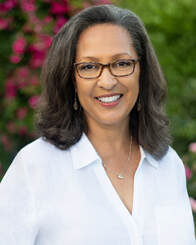 ~Guest blog by Janet Costa Bates I call myself a writer, but I’m not sure why. I should call myself a ‘reviser,’ since, like most writers, I spend much more time revising manuscripts than I do writing the first draft. Writing the first draft is exciting, but the real magic happens during the revision process. My first step in the revision process is to do absolutely nothing. I figuratively put the manuscript into a drawer and then work on something else. When it’s time to look back at it, I can do so with fresh eyes. Are there plot holes and how can they best be fixed? Are the characters true and consistent? If not, does something happen in the story to drive the change in their behavior? Is there fluff to be cut? Cuts can be as small as individual words or as big as characters, sub-plots, or description. I often pick a random number and make myself cut that number of words from a manuscript. There’s safety in knowing I can put any of the words back in, but I rarely do. I also go through the manuscript for grammar - NOT my favorite part. After all, my rule for commas is ‘random.’ Although I try to get the manuscript into decent shape, I’ve learned not to obsess too much. I now know there are magical people called copy editors who have much more grammatical talent than I do. Some revisions are routine and fairly quick. Other revisions are not at all routine, not at all quick, but totally worth it. Let me share a few examples with you. 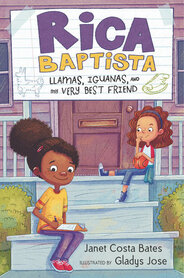 Years ago, I started a manuscript as a picture book, but eventually realized, not only was it too long, it didn't have the visuals a picture book required. After revising, I tried it as a magazine story. It received some interest from a major children’s magazine but, even though I’m pretty good at accepting editorial suggestions, I couldn’t quite wrap my head around some of the changes they were requesting. At a retreat, someone suggested it would be better as a middle grade, so I stretched it into a novel. With that story, I got an agent. My agent spent years - yes, years - trying to sell it. The phrase ‘raving rejections’ started to make sense to me. Editors gushed over the characters, expressed their love for the voice, but ultimately, they all said no to the story. At a Whispering Pines Retreat, I had a critique with Christian Trimmer, then a Simon and Schuster editor. Similar to the others who had rejected the manuscript, he said the story had great characters, great voice, but the plot wasn’t working. He followed that up with ‘but you have a great set-up for a chapter book series.’ My then agent still wanted to try it as a middle grade, but eventually, after a friendly parting of the ways with that agent, I went with Christian’s advice. LLAMAS, IGUANAS, AND MY VERY BEST FRIEND, illustrated by Gladys Jose, is the first in the Rica Baptista chapter book series. It will be released by Candlewick Press on October 25 and is a Junior Library Guild Gold Standard Selection. I’m looking forward to its November 9th launch at An Unlikely Story. 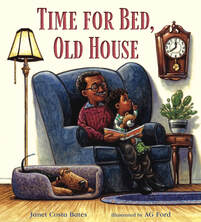 A process that took even longer was a picture book manuscript I started in 1999. I went to my first NESCBWI Conference, met an editor, and submitted the manuscript. She gently turned it down with a helpful note explaining why. That was the first of many rejections it received. I spent a few more years revising it. Again. And again. More rejections. Finally, I put it in a drawer – for about ten years. (I don’t recommend putting a manuscript in a drawer for ten years, but, well, sometimes life happens and you don’t get a chance to open up that drawer for a while.) Eventually, I took that manuscript out, greatly revised it, and sent it to Andrea Tompa of Candlewick, whom I had met with at a conference. She said yes! TIME FOR BED, OLD HOUSE, illustrated by AG Ford, was released in 2021 and has received several honors. It was well worth the wait and the revisions. (Side note: That first editor to whom I sent a very early version of TIME FOR BED, OLD HOUSE, was Mary Lee Donovan of Candlewick. As Andrea’s boss, she gave her the nod to acquire it. Publishing is a small world, my friends.) So, look at your manuscript with fresh eyes. Find the plot holes, strengthen the characters, and cut the fluff. Putting time and effort into your revisions will make the magic happen. 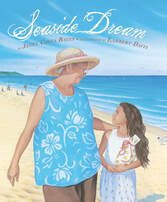 Bio Janet Costa Bates is the author of LLAMAS, IGUANAS, AND MY VERY BEST FRIEND (Candlewick), the first book in the Rica Baptista chapter book series and a Junior Library Guild selection. TIME FOR BED, OLD HOUSE (Candlewick), received four starred reviews, was listed on several 2021 best books lists, and was an NAACP Image Award nominee. SEASIDE DREAM (Lee and Low), received a Lee and Low New Voices Honor Award. Find her at janetcostabates.com or on Twitter/IG @jcostabates.  ~by Amanda Smith There are few things at 24 Carrot Writing that thrills us as much as celebrating one of our own. Even though Megan is a recent addition to the 24 Carrot team, joining us in 2021 as a regular contributor, she has been “one of our own,” for a long time. I first met Megan at a critique group organized through the Writers’ Loft. Soon after, I ran into her at the NESCBWI Spring Conference, and later that year we both attended a picture book workshop together. Somehow, during that time frame, each one of the original 24 Carrot founders’ paths crossed with Megan’s at different events, and the following year we all carpooled together to the Spring Conference. Those daily drives back and forth were filled with engaging conversations about writing, and workshops, and dreams. Megan had just signed with her agent, Lindsay Davis Auld from Writers House, and we were excitedly crossing all our fingers and toes for her. And here we are – four years later, celebrating the bright light of Megan’s debut picture book Twinkle, Twinkle, Winter Night (Clarion Books) illustrated by Nneka Myers! Over the years we have learned many lessons from Megan's approach to writing and her work philosophy. We'd love to share some of those with you. 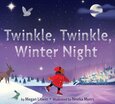 LESSONS WE'VE LEAREND FROM MEGAN: Be Gracious: At that very first critique group, one of those serendipitous, hive-mind, similarly-themed-story flukes popped up. In the past, I’ve witnessed these kinds of situations ruin writerly relationships, but Megan responded with so much grace and this-is-the-business professionalism that it was hardly a blip on the radar. Over the years we’ve witnessed her kind support to the writing community, her willingness to jump in and help at book events, her praise and appreciation for other writers, and as a critique partner, her thoughtful insight and cheerleading of our writing – always with a generous dose of Megan sparkle. Follow Your Passions: Before focusing on writing, Megan was a classroom teacher and reading interventionist. Literacy accessibility is one of her biggest passions. She doesn’t just love writing. She loves books, and reading, and kids reading books, and reading books to kids, and making reading available to all. This passion is sprinkled, like star-dust, onto everything she does, her audience always in her mind. Not only does it drive her to write beautifully lyrical picture books, but also to explore other ways of breaking open the written word to children, such as writing for the educational market, classroom poetry, and early readers. As a matter of fact, Megan has the first two books of an early reader series Dirt and Bugsy launching in February and June 2023. Following her passion has led her to all kinds of exhilarating opportunities. Trust the Process: The publishing process is long. Very long. Excruciatingly long. Megan signed with her agent in June 2018, and went out on submission later that same month. With a different manuscript. Twinkle, Twinkle, Winter Night was actually her second submission, and between the two, there were two years of ups and downs, very close-calls, and plenty of rejection before signing that contract in 2020. There are so many anxiety-causing stepping stones on the path to publishing, yet Megan trusted her team and her talent, and stayed the course, one step at a time. Own Your Style: When we browse bookstores or share library finds, often one of us will pull a book and announce, “This is a Megan-book.” Megan-books feature lovely language, read-aloud-ability, solid rhythm, winks of humor, and oodles of heart. While the style might be recognizable, her voice is uniquely hers. When it comes to writing picture books, Megan is a lyrical writer. She knows it. She owns it. And she excels at it. We are so excited that we can now pull an actual, very real, totally authentic Megan-book from the shelves. One with her name on the cover! Readers, you and your little ones will fall in love with Megan’s tight writing, her poetic phrasing, and her lilting diction in Twinkle, Twinkle, Winter Night! Dear Megan, we are so excited for you! Shine bright! 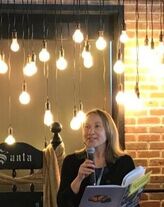 Bio: Megan Litwin is a children’s book author, a former classroom teacher, and a forever believer in book magic. She holds a Master of Arts in Children’s Literature from Simmons University and lives in Massachusetts with her family. She will launch Twinkle, Twinkle, Winter Night Friday, September 23 at 6 pm under the twinkly lights of The Unlikely Story. Click here for more information on this event and other upcoming bookstore visits. Ask for Twinkle, Twinkle, Winter Night at your local bookstore or order here.  by Amanda Smith One of the ladies in my ceramics class, let’s call her Dee, recently made a set of cat dishes for her friend, each dish featuring one letter of the cat’s name, Mozart. One fine day in class, we were all struggling. Like really struggling. Unable to center. Unable to throw. Exasperated, Dee left her wheel for the kiln room to check whether the set of dishes had been fired. She reappeared, holding four dishes that spelled Z-A-R-T. “We’ve lost Mo,” she said. “That’s what’s wrong. Our Mo-jo went missing.” And we were stuck with Zart. Let’s be real. The last couple of years had offered more than enough incentive for Mo to pack his inspirational bags and seek greener pastures. Some of us lost our creative Mo early on in the pandemic, while others had managed to hold on, tooth and nail, for longer. But I haven’t met a single creative over the last two years that hadn’t at some point felt stuck with Zart. Deflated. Incomplete. So what happened in the studio when we discovered the loss of Mo? Each of us dealt with the bad pottery spell differently. Dee is a power-through kind of person. She kept throwing. At the end of the three hours, she had four sloppy piles of clay drying on the plaster table – evidence of four collapsed pots. But she also had two lovely bowls. Peg decided to abandon the wheel for the day and instead focused on glazing some of her vessels that had been bisque-fired– a differently challenging skill, and a good change of pace. I turned my back on the blasted wheel and affixed handles to mugs that I had thrown and trimmed previously. On a whim, I decided to carve designs on the mugs. I got lost in the joy of line and form and measurable progress. The next open studio, Mo was still missing. Dee, Peg and I together decided to hand-build little cheese boards. Collectively we figured out the process, fine-tuned each other’s technique, got expert tips from our studio’s resident master hand-builder and made something pretty cute. Confidence somewhat restored, and bravery bolstered by mutual encouragement, we left the studio rejuvenated that day. So why am I sharing my ceramic woes with you, dear writer? Because, just like me, you might have lost your writing Mo. What to do until Mo returns?
Complete!
Along with the lost bowls, our Mo-jo returned. Did it have anything to do with those cat dishes? Likely not. Did it have everything to do with not giving up even when we felt like it? Absolutely. Keep writing, work on other writing related stuff, fill your well with the frivolous, and commiserate with co-writers. But don’t dare give up. Like a stray cat, Mo will return! (With special thanks to always inspirational DE and PC.) |
Peruse blogs for advice and tips from KidLit creatives.
Categories
All
Archives
April 2024
Click to set custom HTML
Click on the RSS Feed button above to receive notifications of new posts on this blog.
|
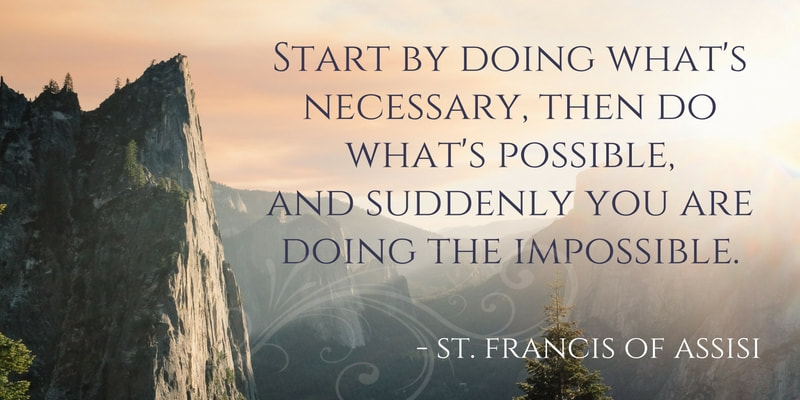
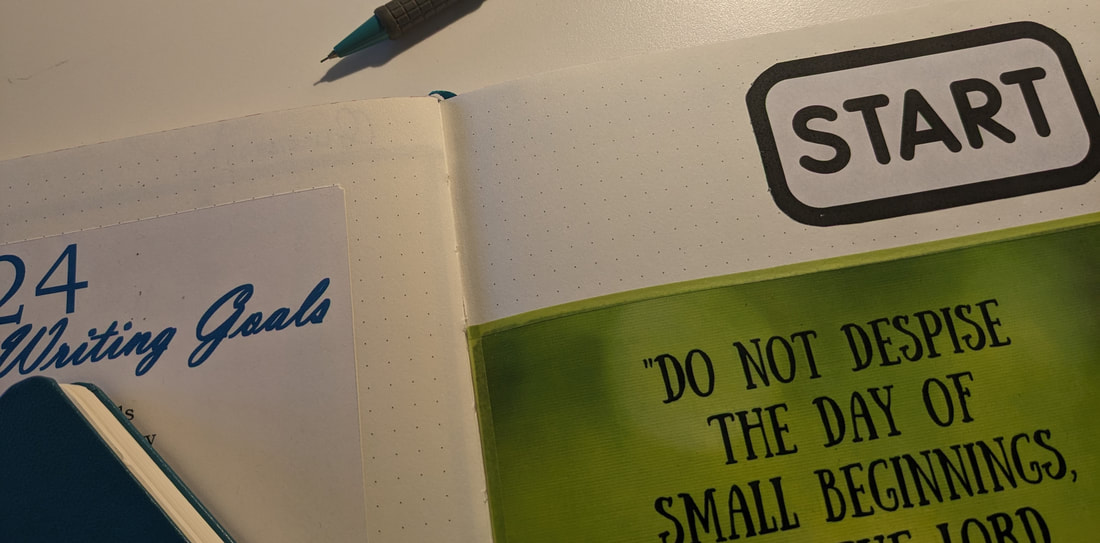

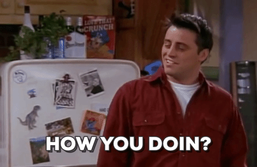
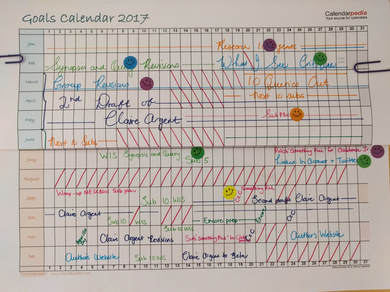
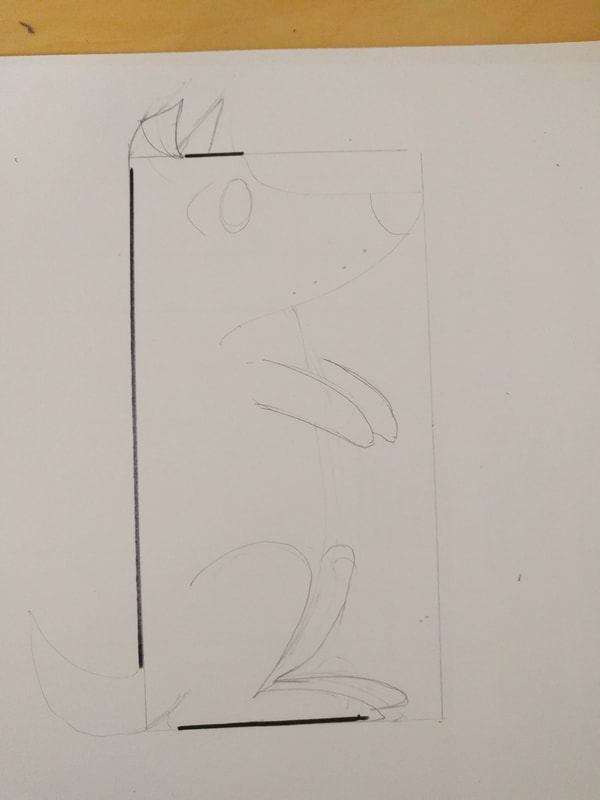
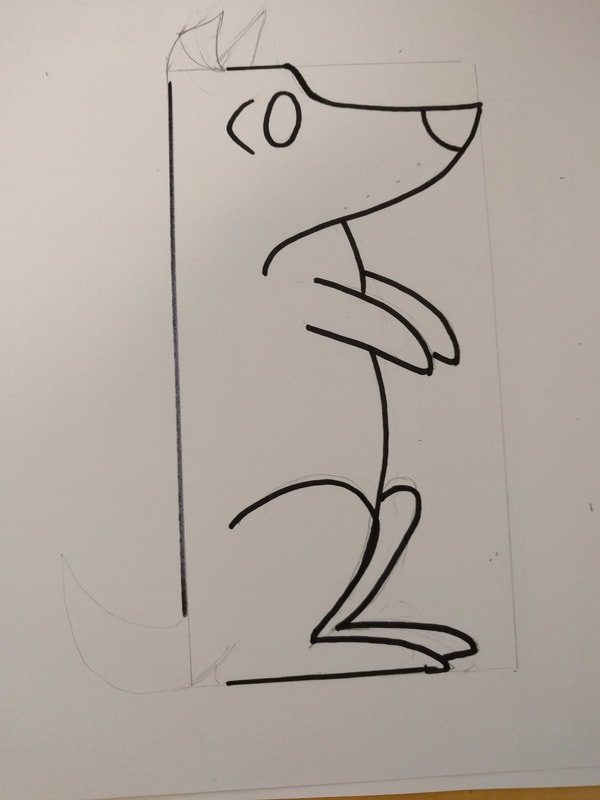
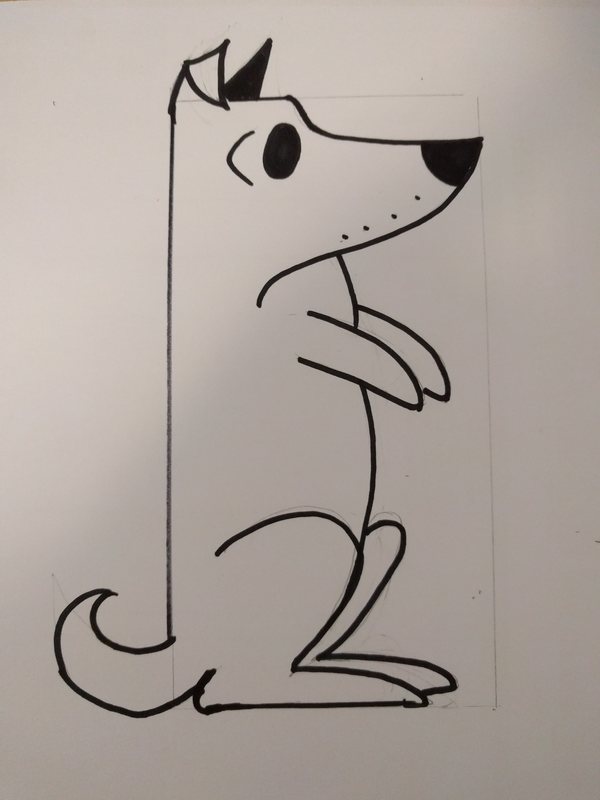

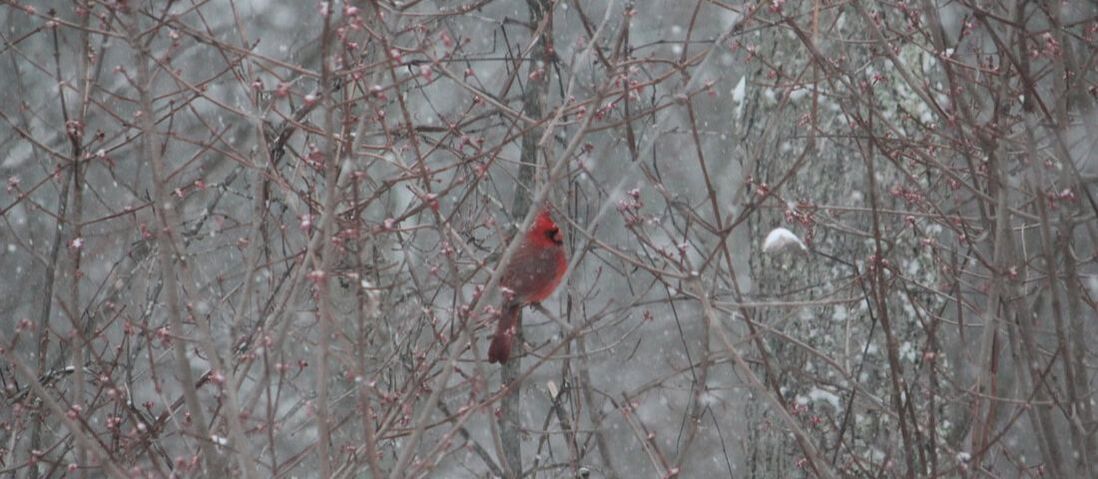
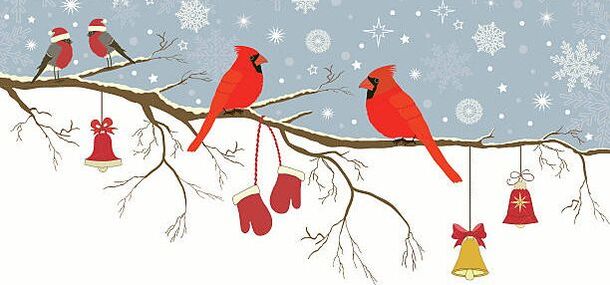

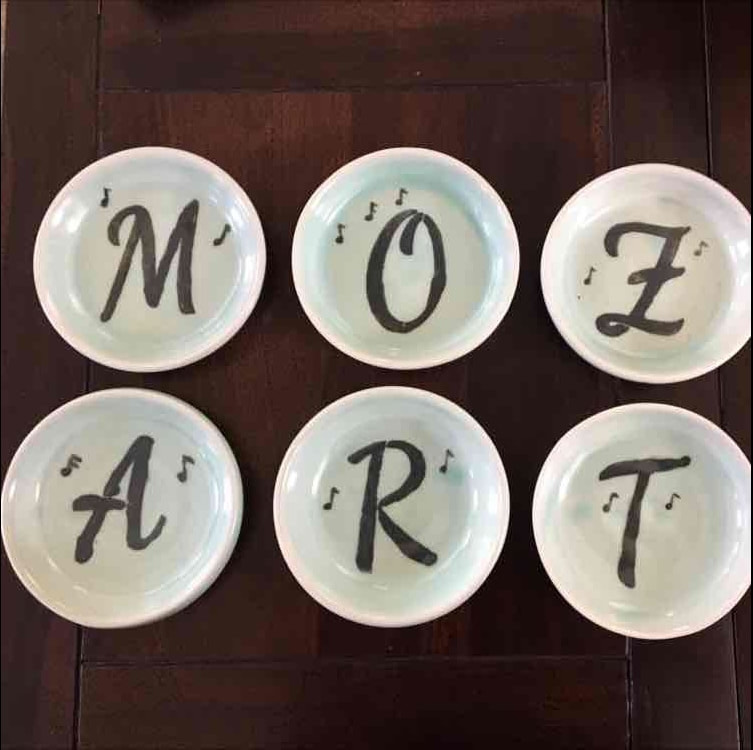
 RSS Feed
RSS Feed